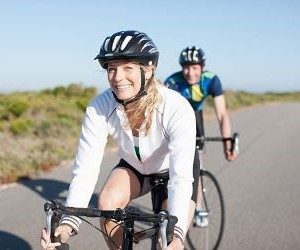Master endurance cycling in tropical climates with effective strategies. Learn hydration, heat adaptation, and training tips for peak performance.
HOW DO I TRAIN FOR A TEAM TIME TRIAL?
Training for a team time trial is not just about individual power but about synchronizing with teammates to maximize speed and efficiency. Success depends on pacing, coordination, communication, and a well-structured training plan that builds both endurance and explosive power. This article breaks down the essentials of team time trial preparation, from workouts to tactics, so you and your team can ride faster together.

Building individual fitness
Before focusing on team drills, each rider must establish a strong fitness foundation. A team time trial demands both sustained aerobic capacity and bursts of anaerobic power for rotations and surges. Riders should combine endurance training, threshold efforts, and sprint intervals to create a balanced performance profile.
Key training elements
Endurance rides build the aerobic base needed for long efforts at high speed. Threshold intervals improve the ability to sustain near-maximal efforts without fading. Short, sharp VO2 max and sprint sessions prepare riders for accelerations when taking pulls or closing gaps. Strength training off the bike adds resilience and prevents fatigue late in the event.
Endurance rides of 3–5 hours to build aerobic base.
20-minute threshold intervals to raise sustainable power.
3–5 minute VO2 max intervals for surges.
Gym sessions focusing on core and leg strength.
Consistency is key—building individual fitness ensures each rider contributes equally to the team effort and avoids becoming a weak link during the race.
Practicing team coordination
A team time trial is a finely tuned collective effort where coordination matters as much as power. Riders must perfect smooth transitions, pacing discipline, and communication. Training together regularly is essential to align rhythm and strategies.
Pacing and rotation
The strongest teams maintain even pacing, avoiding sudden accelerations that burn energy. Pulls at the front should be consistent in duration and intensity, adjusted for wind and terrain. Rotations should be fluid, with each rider easing off gently and rejoining at the back without disrupting the line.
Communication and roles
Clear communication ensures everyone knows when to rotate, slow, or accelerate. Some riders may specialize in longer pulls, while others contribute shorter efforts but at higher intensity. Assigning roles based on strengths keeps the team balanced and avoids burnout.
Practice smooth rotations in both headwinds and tailwinds.
Use hand signals and verbal cues to avoid confusion.
Identify stronger riders for longer pulls on flats.
Train with race-day equipment for realistic practice.
By rehearsing these elements, teams can ride as a cohesive unit where the whole is greater than the sum of its parts.
Optimizing aerodynamics and strategy
Aerodynamics often decides the outcome of a team time trial. Every watt saved from reduced drag translates into faster speeds with less effort. Strategic positioning, equipment choices, and smart race tactics amplify efficiency.
Equipment and positioning
Time trial bikes with aero frames, deep-section wheels, and aerodynamic helmets are standard, but their benefits only shine with proper positioning. Each rider must refine their aero tuck without compromising power output. Practicing in formation helps riders maintain tight spacing while staying safe.
Race-day strategies
A successful team has a pacing plan tailored to the course. Uphill sections require careful effort management, while descents allow recovery. Teams should decide in advance how many riders need to finish together for classification, which determines how aggressively to rotate pulls. Nutrition and hydration during warm-up and pre-race prep also play vital roles in sustaining effort.
Refine aero position through wind tunnel or field testing.
Stay within 1–2 bike lengths for maximum drafting.
Plan pacing around course features like climbs and corners.
Agree on minimum finish group to avoid late collapse.
In conclusion, training for a team time trial is as much about unity as it is about power. Building individual strength, perfecting coordination, and sharpening aerodynamics allow teams to ride faster than they could alone. With structured training and tactical preparation, your squad can turn teamwork into podium results.
YOU MAY ALSO BE INTERESTED






